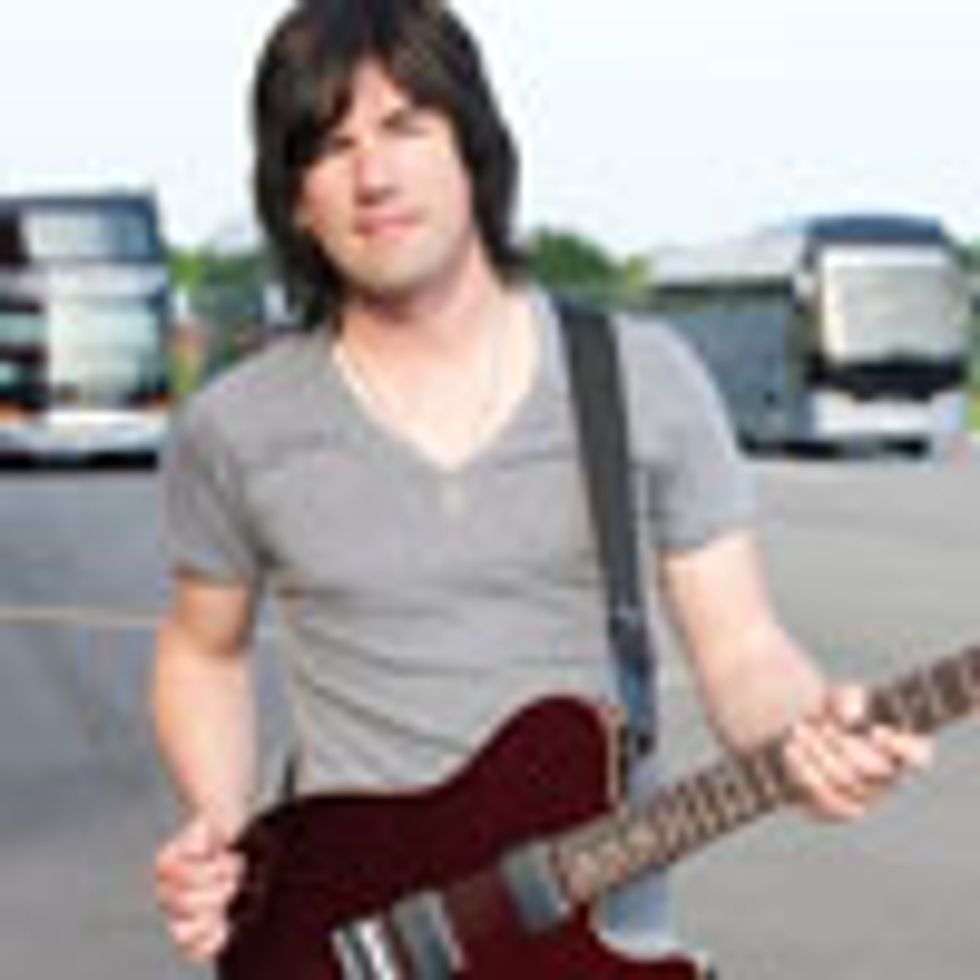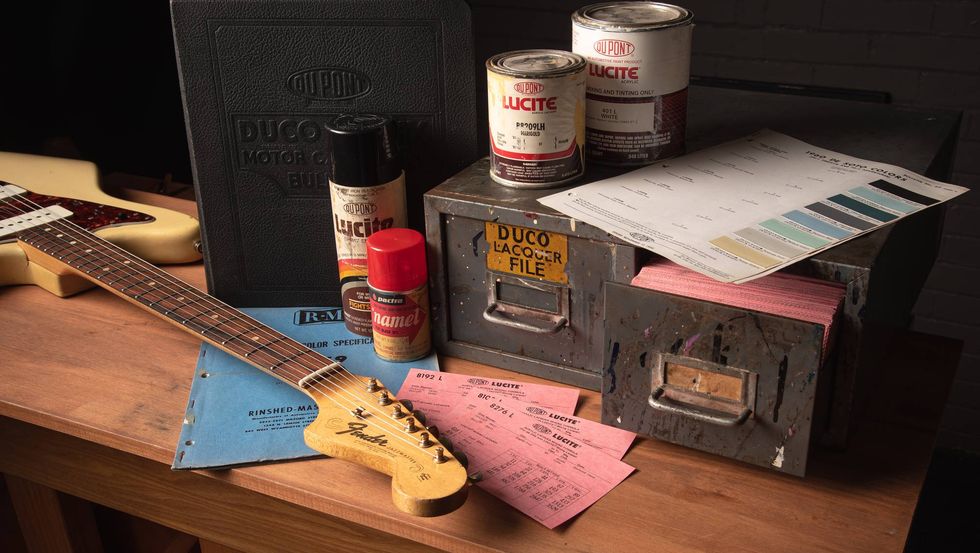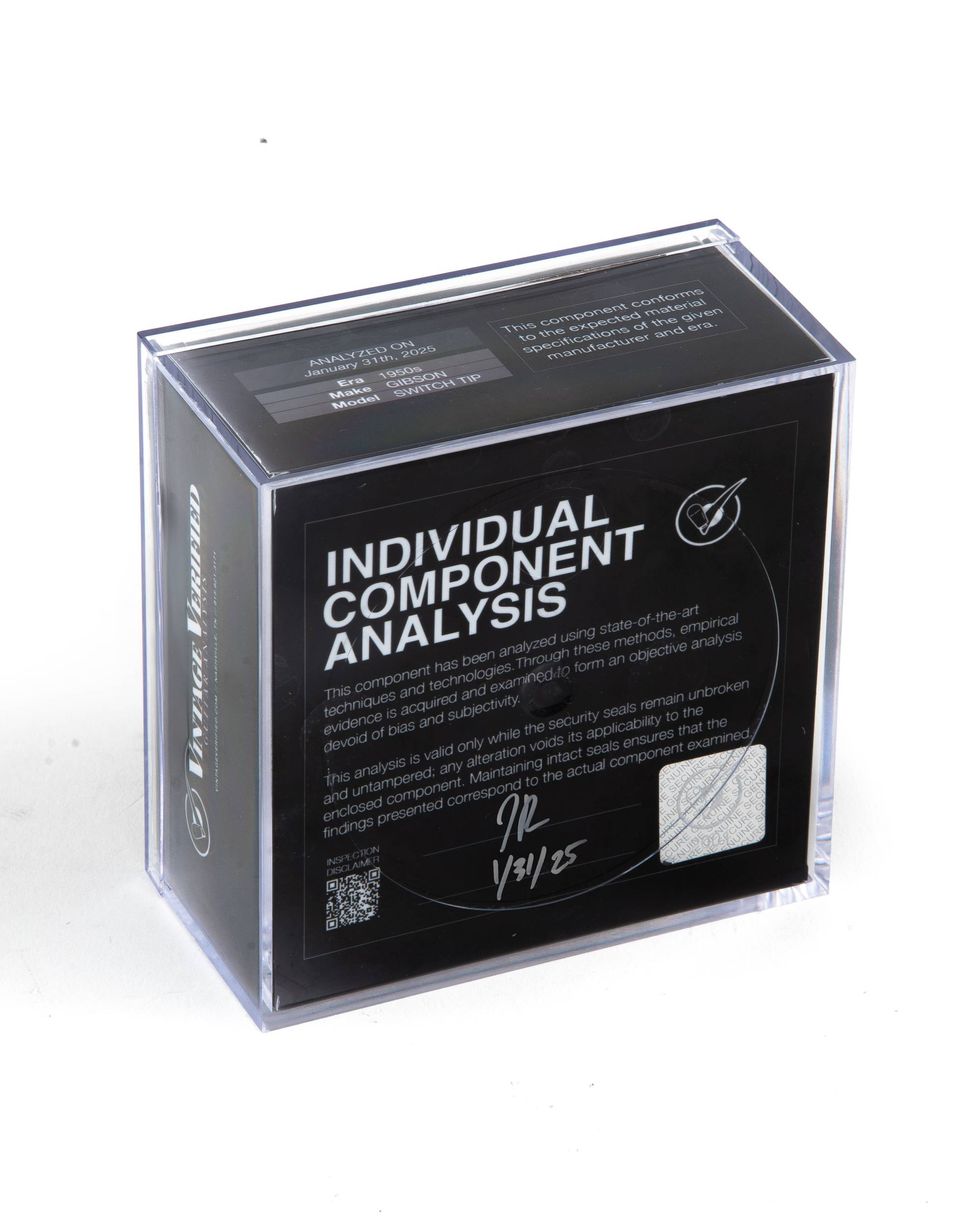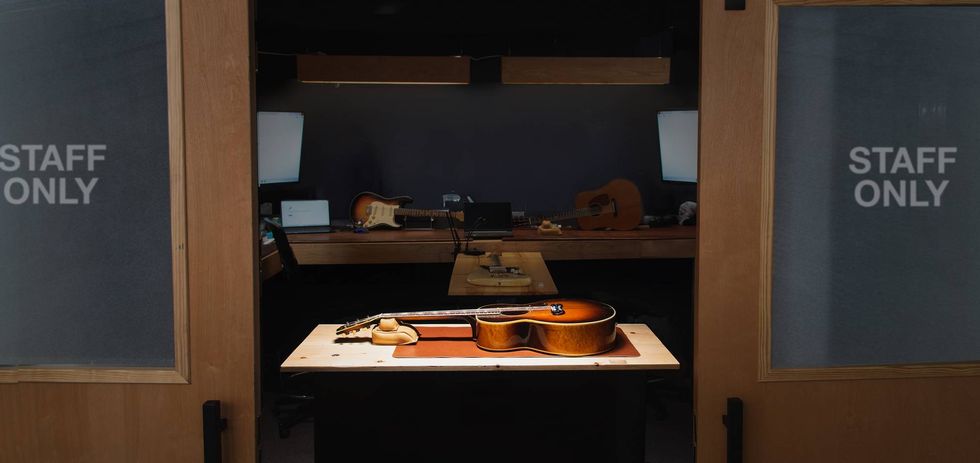It was 1991, and I was playing a club in Hermosa Beach, California. I was just doing my thing and having fun rocking out when suddenly, my guitar volume dropped dramatically. It’s always a jarring event when something like this happens mid-gig and all kinds of things flashed through my head. What could be wrong? Bad guitar cable? Amp blow a fuse? When I turned around to look behind me, there was the club owner fiddling with my amp to my shock and horror. “Hey, what the f#$*?” I yelled. “You’re too damn loud!” he yelled in reply.
This wasn’t the first time someone told me to turn down and it certainly wouldn’t be the last, though it was the first and only time a club owner had done it himself. It’s something we electric guitarists have to deal with constantly. Striking a balance between tone, feel, and stage volume can be challenging for everyone involved (yourself, other band members, soundmen, club owners, etc.). Fortunately, there are more tools available today than ever before to control the volume coming out of your speakers, while still preserving the righteous tone you’ve fought hard to create.
The Old Days
In the ’50s and ’60s, rock ’n’ roll was just coming alive. PA systems, as we know them today, did not exist. Bands relied on the volume coming from their amplifiers to project into the audience—and quite frankly, the whole thing fascinates me. What would it have been like to see The Beatles in the early ’60s? Could you hear the band at all? Up until the late ’60s, guitar amplifiers were all tube and usually anywhere from 5 to 50 watts. There were no master volume controls—you simply turned up the channel volume on the amp you were plugged into, until you achieved the desired volume and tone. As rock music grew in popularity—and crowds and venues grew larger—guitarists like Pete Townsend and Jimi Hendrix demanded bigger and more powerful amplifiers with larger speaker cabinets. The stack was born and 100-watt heads plugged into multiple of 4x12 cabinets quickly became the norm. The tones were awesome, and the volume was deafening!
And Then Came the PA
As the ’70s progressed, so did PA systems and guitar amps. The need for massive stage volume was negated with the advent of high power PA systems—you simply needed to throw a microphone in front of a guitar amp and, voilà, a 5-watt Fender Champ could now fill an arena. The only problem was that guitarists had grown accustomed to the tones the big 50- and 100-watt amps could create—these higher power amps created bigger, beefier tones with much more headroom. The challenge now was how to reign in the volume while retaining the magic tone.
Master Volumes
The first Marshall amps with a master volume control were introduced in 1975. These amps allowed the player to crank the preamp to achieve overdrive, but still control the overall volume of the power section via the master volume. These amps sounded great, but not exactly the same as their “non-master volume” counterparts. Still, master volumes have become very commonplace on modern amps, and they are an excellent way to control overall output while maintaining your desired tone.
When You Just Have to Crank It
Preamp distortion has its own characteristics, and while it can sound great, there is something truly magical about pushing the entire amplifier into overdrive. Most amps have a sweet spot and the magic is achieved when the preamp, power amp, output transformer, and speakers are all working in harmony to create guitar tone bliss. Unfortunately, your bandmates or soundman might find your sweet spot to be unacceptably loud. Following are some ideas for getting your amp in the zone and controlling the volume …
Load Resistors and Re-Amping
One solution is to “load down” your amp using a dummy load, and then “re-amp” or “slave” through another power amplifier. This technique has been used since the ’70s, and it can sound really good! You can also add line level effects between the slaved amp and the power amp. In my opinion, the tone and feel of a rig like this is altered by the load resistor. But that’s not necessarily a bad thing since it can create a cool compression and bounce to the feel of the slaved amp. A downside is that you have to deal with the extra weight and bulk of the second amplifier.
Attenuators
An attenuator goes between your amplifier speaker output jack and your speaker cabinet. Its job is to absorb some of the amp’s power, thereby reducing the volume coming out of the cabinet. One of the first attenuators was the Tom Scholz Power Soak, first used by Scholz himself with the band Boston in the late ’70s. Many more attenuators appeared on the market such as the THD Hotplate, Komet Airbrake, and Weber MASS. All these devices will allow you to reduce your amplifier volume in steps of a few dBs at a time. Most guitarists agree that these units do an admirable job of shaving off some volume at gig and rehearsal levels, while achieving varying results at higher levels of attenuation.
In the last few years, some new attenuators have hit the market that feature a new design. Units such as the Faustine Phantom, Alex Attenuator, and Aracom feature a “reactive” design, meaning they respond to an amplifier much like a speaker does. This translates into improved tone across the whole range of attenuation, allowing guitarists to turn their beloved 100-watt heads into “bedroom volume” amps. These attenuators have been a godsend for many—turning amps that were previously rendered almost unusable by sheer volume, into reasonable gigging, recording, and practicing machines.
Power Scaling
Power Scaling is a technology developed by Kevin O’Connor at London Power. Power Scaling allows you to reduce the voltage delivered to the output section of your amp, with the result being reduced volume and quicker breakup. It’s a relatively new and promising technology, and you can find it in amplifiers from Suhr, Reinhardt, Soultone, and others. A huge advantage of Power Scaling is that it’s completely contained within the amplifier itself.
What’s Right for You?
You really have to try all these approaches to see what works with your setup. I use all of them to varying degrees, and in the case of my Suhr Badger amps, I use three of these methods together. The Badger has Power Scaling and a master volume, and I use it through the Faustine Phantom attenuator when recording, employing all three methods of attenuation in small degrees, to achieve the perfect tone and volume. Good luck on your quest for tone and the perfect volume level for your situation!
 Pete Thorn is a Los Angeles-based guitarist, currently touring with Melissa Etheridge. His solo album Guitar Nerd will be out in early 2011.You can read more about his career and music at peterthorn.com.
Pete Thorn is a Los Angeles-based guitarist, currently touring with Melissa Etheridge. His solo album Guitar Nerd will be out in early 2011.You can read more about his career and music at peterthorn.com.






![Rig Rundown: John 5 [2026]](https://www.premierguitar.com/media-library/youtube.jpg?id=62681883&width=1245&height=700&quality=70&coordinates=0%2C45%2C0%2C45)









![Rig Rundown: Russian Circles’ Mike Sullivan [2025]](https://www.premierguitar.com/media-library/youtube.jpg?id=62303631&width=1245&height=700&quality=70&coordinates=0%2C0%2C0%2C0)







